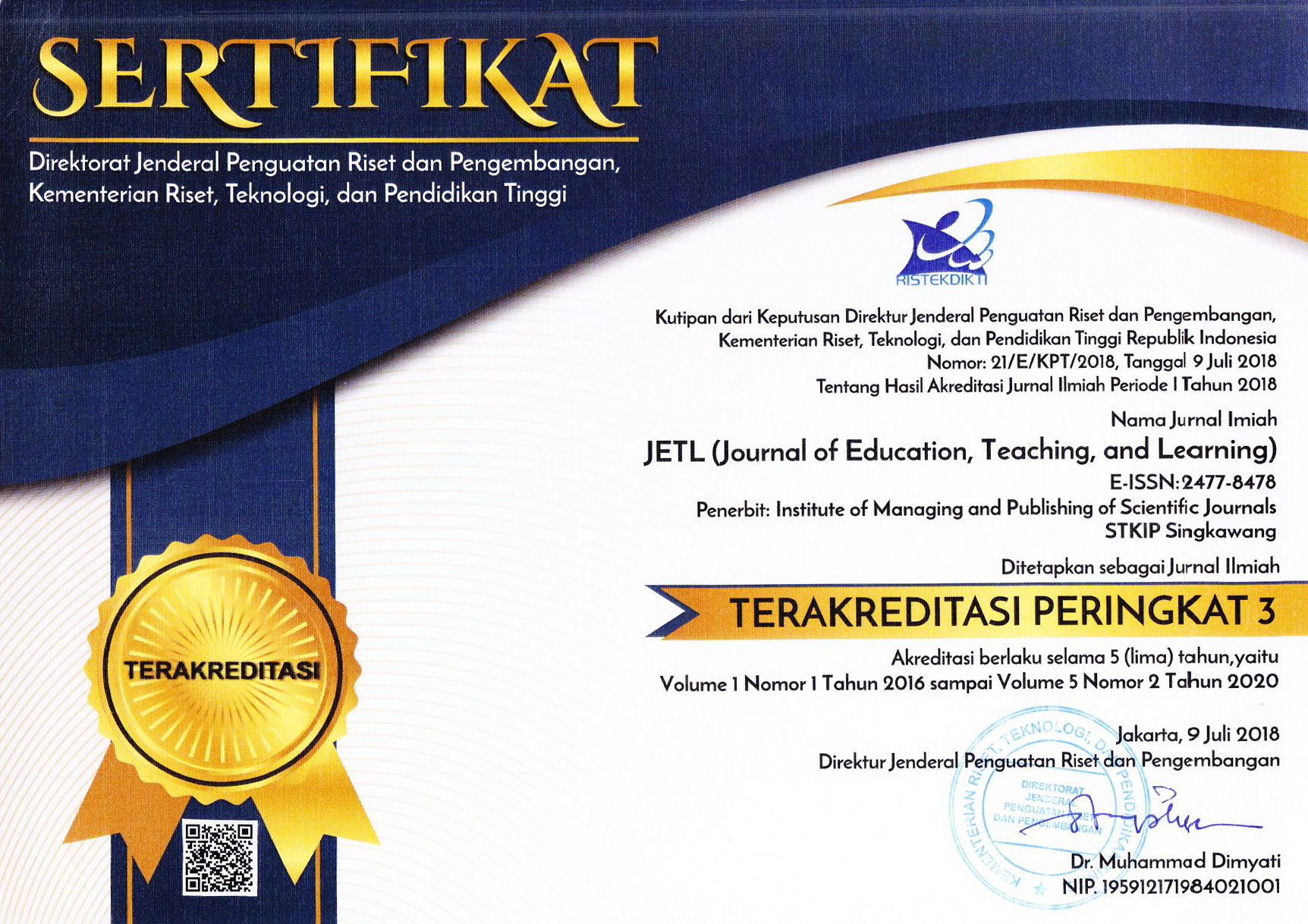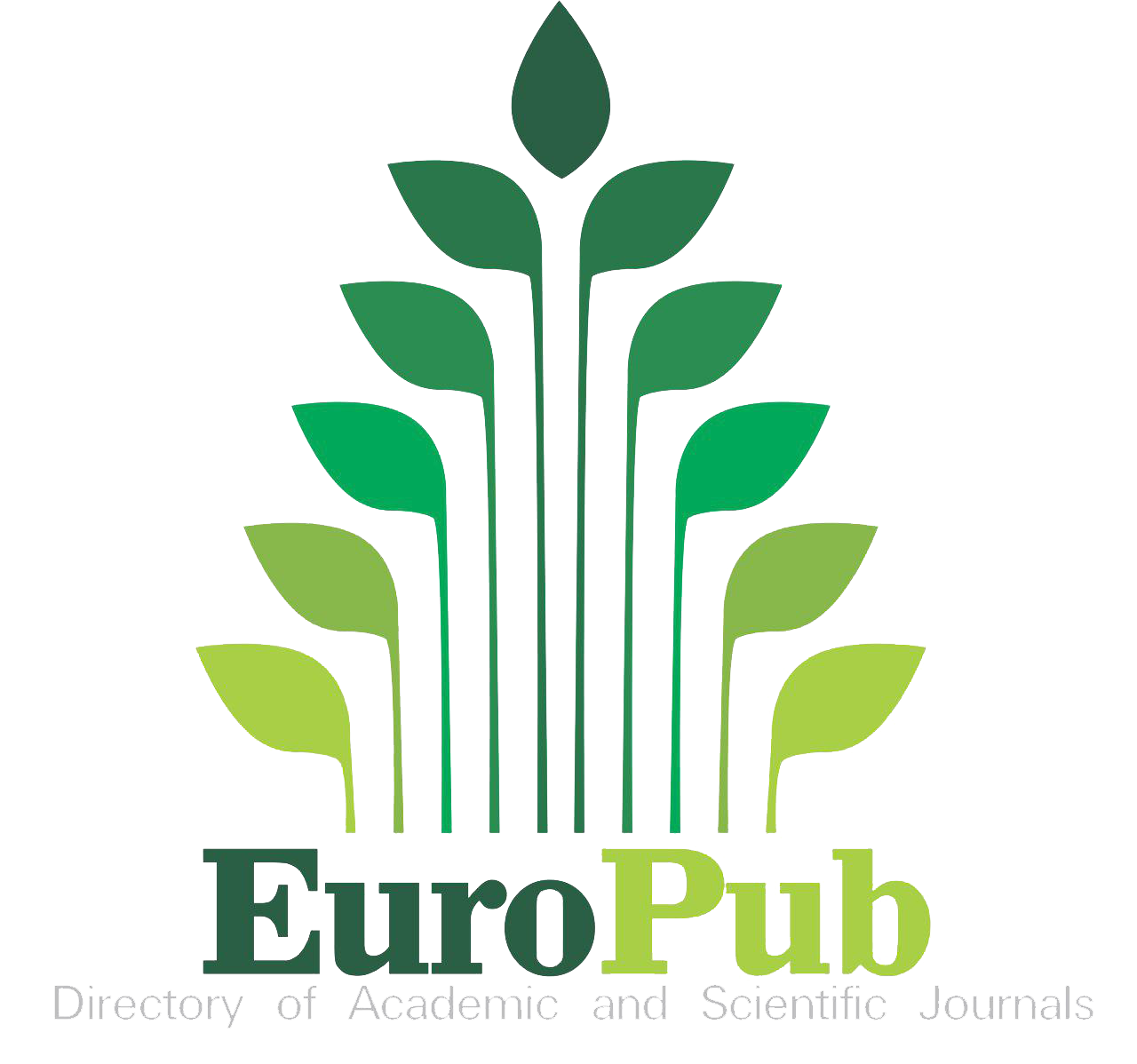Aesthetic-Receptive and Critical-Creative in Appreciative Reading
Abstract
Keywords
Full Text:
PDFReferences
Arends, Richard I. (2008). Learning to Teach. Learning to Teach. Book One and Book Two Translation, Yogyakarta: Student Library.
Culler, Jonatahan. (2000). Literary Theory A Verry Short Introduction. New York: Oxford University Press Inc. by
Eagleton, Terry. (2008). Literary Theory: An Introduction. (Comprehensive Introduction to Literary Theory) (New Edition). Literal translation Widyawati and Evi Setyarini. Yogyakarta and Bandung: Printing Jalasutra.
Iser, Wolfgang. (1987). The Act of Reading. Baltimore and London: The Johns Hopkins University Press.
Ratna, Nyoman Kutha. (2011). Role of Literature Anthropology Cultural Elements. Yogyakarta: Student Library.
Riffaterre, M. (1978). The Semiotics of Poetry. 'Creation of Text' Translated By Suminto A. Sayuti. London: Routledge & Kegan Paul.
Santrock, John W. Psychology of Education. Educational Psychology. Buku1. Jakarta: Salemba Humanika.
Segers, Rien T. Evaluation of Literary Text. (2000). Translated by A. Suminto Sayuti. Yogyakarta: AdiCinta.
Slavin, Robert E. (2011). Psychology Education Theory and Practice. Volume 1 and Jilis 2. Translation. Jakarta: PT index.
Teeuw. A. (1988). Literature and Literary Studies: Introduction to the Theory of Literature. Jakarta: Pustaka Jaya.
Wellek, R. and Warren, A. (1956). Theory of Literature. New York: Harcout, Barance and Company.
DOI: http://dx.doi.org/10.26737/jetl.v2i2.193
Refbacks
- There are currently no refbacks.

This work is licensed under a Creative Commons Attribution-NonCommercial 4.0 International License.
Published by:
Institute of Managing and Publishing of Scientific Journals STKIP Singkawang
Sekolah Tinggi Keguruan dan Ilmu Pendidikan (STKIP) Singkawang
Address : STKIP Singkawang, Jalan STKIP - Kelurahan Naram Singkawang, Kalimantan Barat, INDONESIA, 79251
No. Telp. : +62562 420 0344
No. Fax. : +62562 420 0584
JETL (Journal of Education, Teaching, and Learning)
e-ISSN : 2477-8478
p-ISSN : 2477-5924

Editor in Chief Contact: [email protected] / Wa: +6282142072788
Publisher Contact: [email protected] / Wa: +6282142072788
Management Tools
JETL Indexed by:
JETL (Journal of Education, Teaching, and Learning) is licensed under a Creative Commons Attribution-NonCommercial 4.0 International License.











